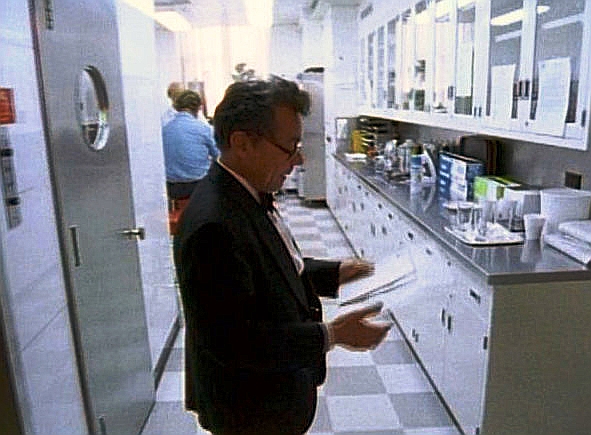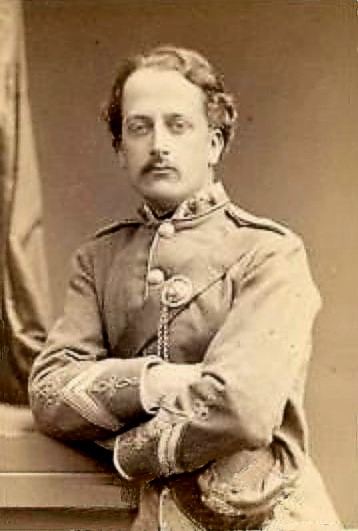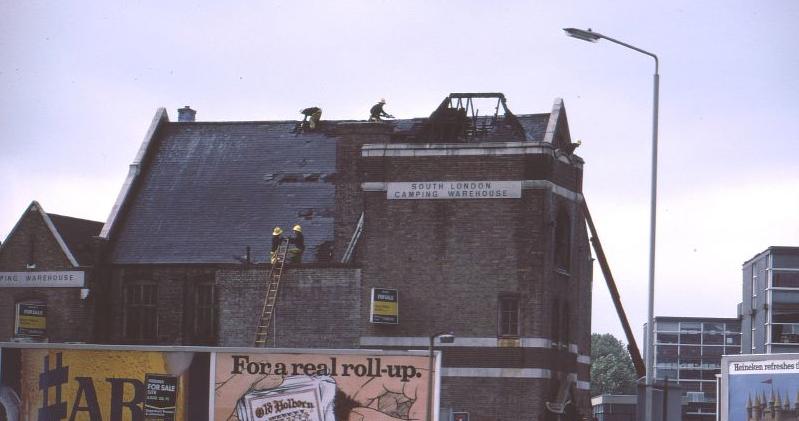|
What The Butler Saw (mutoscope)
''What the Butler Saw'' is a mutoscope reel, and an early example of erotic films dating from the early 1900s. It depicted a scene of a woman partially undressing in her bedroom, as if some voyeuristic " butler" were watching her through a keyhole. The film was seen by depositing a coin in a freestanding viewing machine, which then freed a hand-crank on the side which was turned by the viewer. Social standards are subject to change, and by the 1950s this and similar films were considered harmless when compared to contemporary erotica. The title of this feature became widely used in Britain as a generic term for devices and movies of this kind. The phrase had entered British popular culture after the 1886 divorce case of Lord Colin Campbell and Gertrude Elizabeth Blood Gertrude Elizabeth, Lady Colin Campbell (''née'' Blood; 3 May 1857 – 1 November 1911) was an Irish-born journalist, author, playwright, and editor. She was married to Lord Colin Campbell, a brother-in-law of ... [...More Info...] [...Related Items...] OR: [Wikipedia] [Google] [Baidu] |
Mutoscope
The Mutoscope is an early motion picture device, invented by W. K. L. Dickson and Herman Casler and later patented by Herman Casler on November 21, 1894. Like Thomas Edison's Kinetoscope, it did not project on a screen and provided viewing to only one person at a time. Cheaper and simpler than the Kinetoscope, the system, marketed by the American Mutoscope Company (later the American Mutoscope and Biograph Company), quickly dominated the coin-in-the-slot peep-show business. Operation The Mutoscope works on the same principle as the flip book. The individual image frames are conventional black-and-white, silver-based photographic prints on tough, flexible opaque cards. The image on each card is made by contact printing each frame of the original 70 mm film. Rather than being bound into a booklet, the cards are attached to a circular core, similar to a huge Rolodex. A reel typically holds about 850 cards, giving a viewing time of about one minute. The reel with cards attached ha ... [...More Info...] [...Related Items...] OR: [Wikipedia] [Google] [Baidu] |
Erotica
Erotica is literature or art that deals substantively with subject matter that is erotic, sexually stimulating or sexually arousing. Some critics regard pornography as a type of erotica, but many consider it to be different. Erotic art may use any artistic form to depict erotic content, including painting, sculpture, drama, film or music. Erotic literature and erotic photography have become genres in their own right. Erotica also exists in a number of subgenres including gay erotica, lesbian erotica, women's erotica, bondage erotica, monster erotica and tentacle erotica. Curiosa are curiosities or rarities, especially unusual or erotic books. In the antiquarian book trade, pornographic works are often listed under "curiosa", "erotica" or "facetiae". Erotica and pornography A distinction is often made between erotica and pornography (and the lesser-known genre of sexual entertainment, ribaldry), although some viewers may not distinguish between them. A key distinction, some hav ... [...More Info...] [...Related Items...] OR: [Wikipedia] [Google] [Baidu] |
Butler
A butler is a person who works in a house serving and is a domestic worker in a large household. In great houses, the household is sometimes divided into departments with the butler in charge of the dining room, wine cellar, and pantry. Some also have charge of the entire parlour floor, and housekeepers caring for the entire house and its appearance. A butler is usually male, and in charge of male servants, while a housekeeper is usually a woman, and in charge of female servants. Traditionally, male servants (such as footmen) were better paid and of higher status than female servants. The butler, as the senior male servant, has the highest servant status. He can also sometimes function as a chauffeur. In older houses where the butler is the most senior worker, titles such as '' majordomo'', ''butler administrator'', ''house manager'', ''manservant'', ''staff manager'', '' chief of staff'', ''staff captain'', ''estate manager'', and ''head of household staff'' are sometimes g ... [...More Info...] [...Related Items...] OR: [Wikipedia] [Google] [Baidu] |
Keyhole
A lock is a mechanical or electronic fastening device that is released by a physical object (such as a key, keycard, fingerprint, RFID card, security token or coin), by supplying secret information (such as a number or letter permutation or password), by a combination thereof, or it may only be able to be opened from one side, such as a door chain. A key is a device that is used to operate a lock (to lock or unlock it). A typical key is a small piece of metal consisting of two parts: the ''bit'' or ''blade'', which slides into the keyway of the lock and distinguishes between different keys, and the ''bow'', which is left protruding so that torque can be applied by the user. In its simplest implementation, a key operates one lock or set of locks that are keyed alike, a lock/key system where each similarly keyed lock requires the same, unique key. The key serves as a security token for access to the locked area; locks are meant to only allow persons having the correct key to open ... [...More Info...] [...Related Items...] OR: [Wikipedia] [Google] [Baidu] |
Mutoscope
The Mutoscope is an early motion picture device, invented by W. K. L. Dickson and Herman Casler and later patented by Herman Casler on November 21, 1894. Like Thomas Edison's Kinetoscope, it did not project on a screen and provided viewing to only one person at a time. Cheaper and simpler than the Kinetoscope, the system, marketed by the American Mutoscope Company (later the American Mutoscope and Biograph Company), quickly dominated the coin-in-the-slot peep-show business. Operation The Mutoscope works on the same principle as the flip book. The individual image frames are conventional black-and-white, silver-based photographic prints on tough, flexible opaque cards. The image on each card is made by contact printing each frame of the original 70 mm film. Rather than being bound into a booklet, the cards are attached to a circular core, similar to a huge Rolodex. A reel typically holds about 850 cards, giving a viewing time of about one minute. The reel with cards attached ha ... [...More Info...] [...Related Items...] OR: [Wikipedia] [Google] [Baidu] |
Cambridge University Press
Cambridge University Press is the university press of the University of Cambridge. Granted letters patent by Henry VIII of England, King Henry VIII in 1534, it is the oldest university press A university press is an academic publishing house specializing in monographs and scholarly journals. Most are nonprofit organizations and an integral component of a large research university. They publish work that has been reviewed by schola ... in the world. It is also the King's Printer. Cambridge University Press is a department of the University of Cambridge and is both an academic and educational publisher. It became part of Cambridge University Press & Assessment, following a merger with Cambridge Assessment in 2021. With a global sales presence, publishing hubs, and offices in more than 40 Country, countries, it publishes over 50,000 titles by authors from over 100 countries. Its publishing includes more than 380 academic journals, monographs, reference works, school and uni ... [...More Info...] [...Related Items...] OR: [Wikipedia] [Google] [Baidu] |
Lord Colin Campbell
Lord Colin Campbell (9 March 1853 – 18 June 1895) was a Scottish Liberal politician who sat in the House of Commons from 1878 to 1885. Campbell was the fifth son of George Campbell, 8th Duke of Argyll, and his wife Lady Elizabeth Georgiana, daughter of George Sutherland-Leveson-Gower, 2nd Duke of Sutherland. He was educated at Eton College, St Andrews University and Trinity College, Cambridge. He entered Middle Temple in 1875 and was a lieutenant in the 2nd Argyll Rifle Volunteers. He entered Parliament for Argyllshire in 1878, a seat he held until 1885. A number of Campbell's constituents became disenchanted with him, adopting a parody of a traditional song about the Campbell family: "But their aim, and their claim, which are one and the same,/Are founded in falsehoods of sand, you know./The Campbells are cunning, oho, oho .." One consequence of Campbell's unpopularity was that his brother, the Marquess of Lorne, Queen Victoria's son-in-law, who had previously been MP for Argy ... [...More Info...] [...Related Items...] OR: [Wikipedia] [Google] [Baidu] |
Gertrude Elizabeth Blood
Gertrude Elizabeth, Lady Colin Campbell (''née'' Blood; 3 May 1857 – 1 November 1911) was an Irish-born journalist, author, playwright, and editor. She was married to Lord Colin Campbell, a brother-in-law of Princess Louise, Queen Victoria's fourth daughter. Early life Her parents were Irish landowner Edmund Maghlin Blood (1815, Brickhill, Co. Clare – 1891, Chelsea, London) and Mary Amy Fergusson (1815, Leixlip, Co. Kildare – 8 October 1899, Chelsea, London) who had married in 1851. The Blood family had held estates in County Clare since the reign of Elizabeth I. Edmund and Mary produced three children: Neptune William (born 7 July 1853), Mary Beatrice (born c. 1855) and Gertrude Elizabeth. Marriage Gertrude, a statuesque dark-eyed and celebrated beauty, met Lord Colin Campbell in October 1880 while visiting friends in Scotland, and they had become engaged within days. The couple married on 21 July 1881. Lord Colin had been born on 9 March 1853, the fifth son of George ... [...More Info...] [...Related Items...] OR: [Wikipedia] [Google] [Baidu] |
In Flagrante
''In flagrante delicto'' (Latin for "in blazing offence") or sometimes simply ''in flagrante'' ("in blazing") is a legal term used to indicate that a criminal has been caught in the act of committing an offence (compare ). The colloquial "caught red-handed" and "caught rapid" are English equivalents. Aside from the legal meaning, the Latin term is often used colloquially as a euphemism for someone being caught in the midst of sexual activity. Etymology The phrase combines the present active participle '' flagrāns'' (flaming or blazing) with the noun '' dēlictum'' (offence, misdeed, or crime). In this term the Latin preposition ''in'', not indicating motion, takes the ablative. The closest literal translation would be "in blazing offence", where " blazing" is a metaphor for vigorous, highly visible action. Worldwide Latin America In many Latin American countries, being caught ''in flagrante'' ( es, link=no, en flagrancia) is a common legal requirement for both detenti ... [...More Info...] [...Related Items...] OR: [Wikipedia] [Google] [Baidu] |
Eyre Massey Shaw
Captain Sir Eyre Massey Shaw KCB (17 January 1830 – 25 August 1908) was the first Chief Officer of the Metropolitan Fire Brigade (now renamed the London Fire Brigade), and the Superintendent of its predecessor, the London Fire Engine Establishment, from 1861 to 1891. He introduced modern firefighting methods to the Brigade, and increased the number of stations. He was also in the British Army. Early career Shaw was born in Ballymore, County Cork, Ireland and was educated first at a school in Queenstown and then at Trinity College, Dublin. Shaw considered joining the Church but decided on a career in the Army and gained a commission in the North Cork Rifles, a militia regiment of the British Army (later the 9th Battalion, King's Royal Rifle Corps) from 1854 to 1860, reaching the rank of captain. He resigned from the Army on being appointed Chief Constable of Belfast Borough Police in June 1860, in charge of both the police and the fire brigade. In September 1861, following t ... [...More Info...] [...Related Items...] OR: [Wikipedia] [Google] [Baidu] |
Metropolitan Fire Brigade (London)
The London Fire Brigade (LFB) is the fire and rescue service for London, the capital of the United Kingdom. It was formed by the Metropolitan Fire Brigade Act 1865, under the leadership of superintendent Eyre Massey Shaw. It has 5,992staff, including 5,096 operational firefighters and officers based at 102 fire stations (plus one river station). The LFB is led by the Commissioner for Fire and Emergency Planning, a position currently held by Andy Roe. The brigade and Commissioner are overseen by the Greater London Authority, which in 2018 took over these responsibilities from the London Fire and Emergency Planning Authority (LFEPA). In the 2015-16 financial year the LFB received 171,488 emergency calls. These consisted of: 20,773 fires, 48,696 false alarms of fire and 30,066 other calls for service. As well as firefighting, the LFB also responds to road traffic collisions, floods, shut-in-lift releases, and other incidents such as those involving hazardous materials or major tr ... [...More Info...] [...Related Items...] OR: [Wikipedia] [Google] [Baidu] |
Cadogan Place
Cadogan Place is a street in Belgravia, London. It is named after Earl Cadogan and runs parallel to the lower half of Sloane Street. It gives its name to the extensive Cadogan Place Gardens, private communal gardens maintained for Cadogan residents. It is owned by Cadogan Estates. Cadogan Place is considered part of Prime Central London, an area of high property values that are popular with foreign buyers, particularly from the Middle East and China. The average value of a property in Cadogan Place was estimated at £5 million in 2020; with flats selling for an average of £3.1 million and terraced houses for £11.1 million. Nos. 21–27, 28–33, 34–69, and 70–90 Cadogan Place are Listed building#England and Wales, listed Grade II on the National Heritage List for England as are the two bollards outside 70 Cadogan Place marked 'Hans Town 1819'. The of communal gardens, known as the North and South gardens, are also Grade II listed on the Register of Histori ... [...More Info...] [...Related Items...] OR: [Wikipedia] [Google] [Baidu] |
.jpg)


.jpg)


.jpg)


_3.jpg)